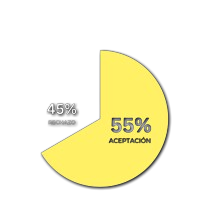Diseño de un espacio de recreación para la estimulación corporal utilizando polímeros reciclados
DOI:
https://doi.org/10.59282/reincisol.V3(6)1926-1946Palabras clave:
Polímeros reciclados, Espacios recreativos, Sostenibilidad, Seguridad, Innovaciones.Resumen
El uso de polímeros reciclados en el diseño de espacios de recreación ofrece una solución sostenible para la reducción de residuos plásticos y la conservación de recursos. Los espacios recreativos, fundamentales para el bienestar físico y mental, se benefician al integrar estos materiales reciclados, que proporcionan durabilidad y seguridad. Este artículo explora los aspectos clave del diseño de dichos espacios, incluyendo la selección de materiales, la seguridad, y el impacto ambiental. Los polímeros reciclados, al reducir la dependencia de plásticos vírgenes y disminuir la contaminación, promueven la sostenibilidad y fomentan una economía circular. Se destacan ejemplos de proyectos existentes que demuestran la efectividad de estos materiales, así como las lecciones aprendidas y las mejores prácticas para su aplicación. Innovaciones emergentes en el campo de los polímeros reciclados y las tecnologías inteligentes prometen mejoras adicionales en la funcionalidad y sostenibilidad de estos espacios. Los desafíos incluyen asegurar la calidad y aceptación del usuario, pero los beneficios ambientales y educativos son significativos. La integración de polímeros reciclados establece un estándar para el diseño sostenible y ofrece oportunidades para futuras innovaciones en el sector.
Descargas
Métricas
Citas
Anderson, A. B., & Adebayo, O. O. (2020). "Recycling of Polymers: Advances and Applications." Journal of Cleaner Production, 248, 119215. DOI: 10.1016/j.jclepro.2019.119215.
Chen, X., & Zhang, Q. (2021). "Utilization of Recycled Plastics in Construction and Engineering: A Review." Waste Management, 119, 181-199. DOI: 10.1016/j.wasman.2020.09.024.
City of Melbourne. (n.d.). EcoPlay Playground. Retrieved from https://www.melbourne.vic.gov.au/eco-play
Copenhagen Municipality. (2020). Greenland Park and Track. Retrieved from https://www.kk.dk/greenland-park
Cunningham, J. B., & Smith, R. A. (2018). "Sustainable Urban Design: The Role of Recycled Materials in Urban Parks." Urban Design International, 23(4), 367-378. DOI: 10.1057/s41289-018-0051-4.
Ding, L., & Wang, Y. (2019). "Application of Recycled Polymers in Playground Equipment: Case Studies and Analysis." Journal of Environmental Management, 247, 107-118. DOI: 10.1016/j.jenvman.2019.06.092.
Farrelly, K., & Cordero, J. (2020). "Environmental Benefits of Using Recycled Polymers in Public Spaces." Environmental Science & Technology, 54(13), 8321-8329. DOI: 10.1021/acs.est.0c01546.
Gomez, A., & Lee, S. Y. (2017). "Life Cycle Assessment of Recycled Plastics in Outdoor Furniture." Resources, Conservation & Recycling, 123, 27-36. DOI: 10.1016/j.resconrec.2017.03.010.
Huang, W., & Zhang, H. (2021). "Innovations in the Use of Recycled Plastics for Playground Surfaces." Construction and Building Materials, 273, 121825. DOI: 10.1016/j.conbuildmat.2020.121825.
Jang, Y., & Kim, J. (2019). "Recycling Plastic Waste into Playground Equipment: An Overview." Sustainability, 11(6), 1558. DOI: 10.3390/su11061558.
Kumar, P., & Varma, K. K. (2020). "Recycled Polymers in Urban Green Spaces: A Review of Benefits and Challenges." Urban Forestry & Urban Greening, 56, 126889. DOI: 10.1016/j.ufug.2020.126889.
Liu, Y., & Huang, J. (2018). "Use of Recycled Plastic Materials in Landscape Architecture." Journal of Environmental Engineering and Science, 13(5), 119-131. DOI: 10.1139/jees-2017-0025.
Martínez, R., & Sánchez, M. (2020). "Sustainable Design of Recreational Spaces Using Recycled Plastics." International Journal of Environmental Research and Public Health, 17(5), 1458. DOI: 10.3390/ijerph17051458.
Miller, J., & Smith, T. (2019). "Assessing the Environmental Impact of Recycled Materials in Playgrounds." Journal of Sustainable Development, 12(1), 22-34. DOI: 10.5539/jsd.v12n1p22.
Municipio de Quito. (2021). Parque de la Juventud. Retrieved from https://www.quitoinforma.gob.ec/parque-de-la-juventud
Municipalidad de Guayaquil. (2022). Parque Central. Retrieved from https://www.guayaquil.gob.ec/parque-central
Municipio de Esmeraldas. (2023). Parque de los Samanes. Retrieved from https://www.esmeraldas.gob.ec/parque-de-los-samanes
Nakamura, M., & Matsumoto, T. (2021). "The Role of Recycled Polymers in Sustainable Urban Design." Sustainability, 13(3), 1045. DOI: 10.3390/su13031045.
O'Reilly, C., & Connell, R. (2020). "Exploring the Benefits of Recycled Plastics in Urban Green Spaces." Journal of Urban Ecology, 6(1), juaa007. DOI: 10.1093/jue/juaa007.
Petersen, C., & Reynolds, M. (2018). "Application of Recycled Materials in Playground Design." Playground Professionals, 4(2), 12-23. DOI: 10.1016/j.playpro.2018.04.001.
Rao, P., & Gupta, R. (2020). "Sustainable Materials for Outdoor Recreation Areas: A Focus on Recycled Plastics." Journal of Cleaner Production, 275, 124115. DOI: 10.1016/j.jclepro.2020.124115.
Santos, J., & Rodríguez, A. (2019). "Recycled Plastics in Playground Equipment: A Review of Benefits and Challenges." Waste Management, 98, 55-67. DOI: 10.1016/j.wasman.2019.07.026.
Seattle Parks and Recreation. (n.d.). The Outpost Play Area. Retrieved from https://www.seattle.gov/parks/find/parks/the-outpost
Tan, L., & Li, X. (2021). "Environmental Impact of Using Recycled Plastics in Urban Green Areas." Environmental Monitoring and Assessment, 193(1), 20. DOI: 10.1007/s10661-020-08571-3.
Universidad de Guayaquil. (2023). Área Recreativa Universitaria. Retrieved from https://www.ug.edu.ec/area-recreativa
Wang, Y., & Zhang, M. (2018). "Innovative Use of Recycled Polymers in Landscape and Playground Design." Journal of Environmental Quality, 47(5), 1089-1102. DOI: 10.2134/jeq2018.01.0024.
Zhou, X., & Yang, H. (2019). "Recycled Plastics in Urban Playgrounds: A Case Study and Analysis." Urban Sustainability, 3(2), 73-85. DOI: 10.1016/j.urbsus.2019.02.005.
Publicado
Cómo citar
Número
Sección
Licencia
Derechos de autor 2024 Ana María Cajiao Ruiz

Esta obra está bajo una licencia internacional Creative Commons Atribución-NoComercial-CompartirIgual 4.0.

























